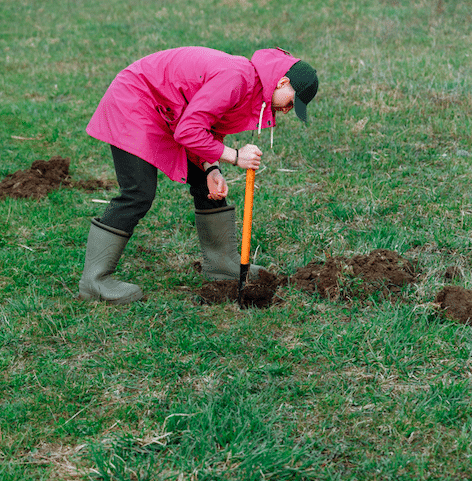Financial Literacy 101: Can Expenditures or Investments in voluntary stormwater retrofits provide property owners a tax benefit?
Since it is financial literacy month, it seemed timely to scope out an overview of the tax benefits of stormwater retrofits. This article introduces property owners to the topic with two more pieces to follow that spiral deeper into the specifics.
—-
Property Owner Tax Benefits
Stormwater property best management practices are a critical investment to help improve the sustainment of our real estate and our local community. They’re a major component of economics with financial literacy. Volunteering to improve the manner in which your property handles stormwater runoff can have numerous environmental and economic benefits at a personal and community level ranging from protecting your real estate from flooding and erosion to protecting and improving your local community’s water quality and flooding. It also helps increase your property’s real estate resale and/or rental value, reduces property maintenance costs, and reduces your monthly or annual stormwater utility fees in some localities. In some areas, your local government may reward you with an incentive rebate or grant to improve your property’s water runoff from storm events.
We (Rainplan) often talk about the above benefits of stormwater for property improvements because they’re the more widely accessible and attainable benefits across the national landscape. However, there is another economic benefit that is not widely taken advantage of but should be! Welcome to stormwater financial literacy 101!
Stormwater Tax Advantages
Stormwater best management practices are considered land improvements, and land improvements are depreciable against your taxable income.
Depreciation is an accounting tool that accounts for the loss in asset value from the gradual deterioration of an asset’s condition and use. Its purpose is to compensate the owner for the value that the investment loses every year. In essence, it’s a trade-off for property owners and a tax incentive. It is not very well known that land improvements can be depreciated as capital assets. The Internal Revenue Service allows you to depreciate assets used in accordance with their useful lives. While the IRS considers land to have an indefinite useful life (in most cases), many improvements we make to land gradually wear out. Examples such as landscaping with plants, fences, curbs, parking, irrigation, and, most importantly, drainage are examples of land improvements that gradually deteriorate over time. These improvements can be depreciated when built and/or replaced.
The depreciation for these assets can potentially qualify for an accelerated 15 yr depreciation schedule versus the traditional 20-year period. The depreciation schedule for residential real estate property is 27.5 yr. That means you can spread out the investment cost over a shorter period, giving you a significant annual benefit to your taxes. Also, it is essential to differentiate the repair of land improvements.
When making repairs to an existing land improvement, you can deduct 100% of those costs in the year they are incurred.
Land Improvement Projects
Each type of land improvement project (rain gardens, green roofs, permeable pavers, dry wells, etc.) is different with varying tax calculations. For example, with green roofs, you need to segregate the costs considered home repair (100% deductible in the year incurred) versus new functional land improvements for the drainage use that would be depreciated. In contrast, the tax benefits of a rain garden are more straightforward. The costs of a new bioretention facility are depreciated over its useful life because of its benefit to the building structures and the local public infrastructure it supports (city stormwater and sewer systems). Perhaps the most utilized are land improvement projects. With stormwater, most likely, your drainage systems would fall under land improvements. Stormwater best management practices such as french drains, downspouts and gutter systems, bioswales, and dry wells could qualify as depreciable assets.
This is not intended to be tax guidance, and as with any tax subject, it is essential to consult a licensed accountant for your specific situation. This is more of a quick introduction to a financial literacy workshop. Still, Rainplan can help educate and guide you toward stormwater retrofit projects best situated for your property. (Quick plug, IN ADDITION, we can help you find the most cost-effective financing, and in the DC metropolitan area, we can connect you to qualified GI contractors when you create your free Rainplan.)
With stormwater management practices utilizing green infrastructure, it is essential to look at these investments as functional improvements to your property that play a crucial part in neighboring sustainability. They have a valuable life to your personal or business property and the public stormwater infrastructure in the public right of way! Considering both the qualitative and quantitative values of a stormwater upgrade, it makes sense to investigate the compounding financial benefits this could have on your property.




